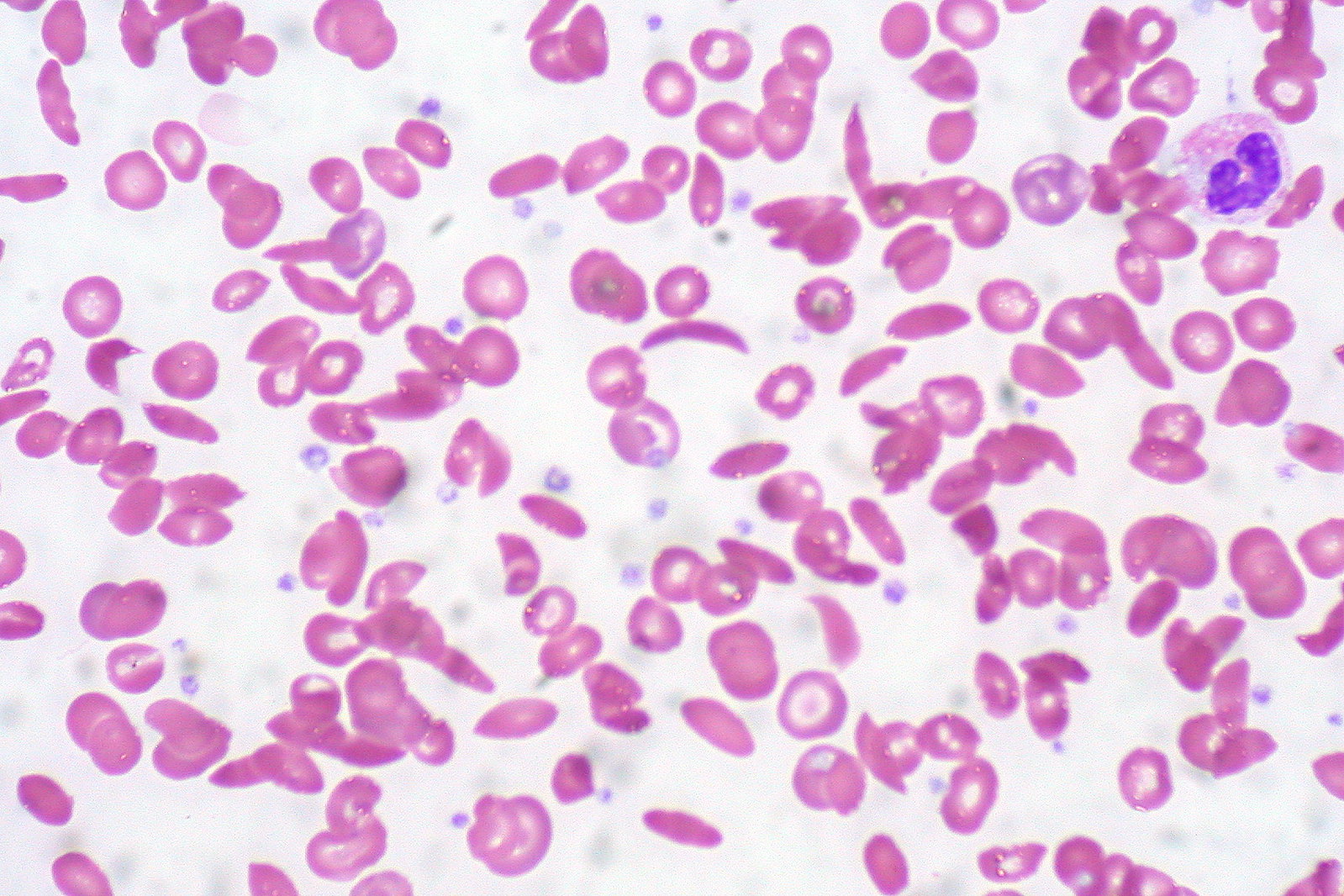Playlist
Show Playlist
Hide Playlist
Sickle Cell Anemia: Clinical Pathology and Diagnosis
-
Slides Sickle Cell.pdf
-
Reference List Pathology.pdf
-
Download Lecture Overview
00:00 What else are we worried about? Okay. Now this will be the second time where we have a hemolytic anemia in which your patient is now susceptible to parvovirus B19. 00:11 As soon as you hear parvovirus B19, who's been shut down? Bone marrow. So therefore we have? You tell me. 00:18 A normocytic non-hemolytic anemia. Clear. Aplastic crisis. Next. 00:25 What if there's a infection of the bone? Remember, if the patient did not have sickle cell disease, the most common cause of osteomyelitis is? Good. Staph aureus. No doubt. No doubt. 00:40 What if you had a patient that stepped on a nail and then developed osteomyelitis? That's pseudomonas. If your patient has sickle cell disease, no doubt this is salmonella osteomyelitis. 00:53 Make sure from microbiology that you're quite clear about the different organisms based on the condition and environment resulting this condition. 01:04 Other sequlae of chronic hemolytic anemia we know about. 01:07 What kind of jaundice? Significant. And what kind of gallstones? Good. 01:12 Pigment bilirubin stones. Here's a screen that I was referring to as, take a look at the name here. 01:20 What's my substitution? It's a glutamic acid being substituted by veiling. 01:26 What position? Six. What do we call this? E6V mutation. It's a newborn screen. Sickle prep. 01:34 What are you trying to do? So you take the patient's RBC. 01:37 You're trying to develop -- or you're trying to create what kind of environment? You wanna witness the RBC sickling or polymerizing. So what do you wanna do? You wanna create an environment in which it's reduced the oxygen tension you see this. 01:49 So when you reduce the oxygen tension if you have a patient that has sickle cell, then you know there's going to be sickling. It's all part of your confirmation process diagnosis. 01:59 This is called sodium metabisulfite. And then, hemoglobin electrophoresis. 02:05 Let me -- are you excited about this topic? Hemoglobin electrophoresis. 02:11 Last time we talked about this was thalassemia. So this one you definitely recognize. 02:16 So with thalassemias, you're dealing with hemoglobin electrophoresis. 02:20 And there -- tell me about the normal hemoglobins that we should be looking at. 02:25 Hemoglobin A, 97% hemoglobin A2, 2%. Hemoglobin F, 1%. 02:35 You memorized the normal hemoglobin percentages. 02:39 So under here, normocytic hemolytic anemia, what do you expect to see? Hemoglobin S. So what's sickle cell disease? That's exactly what we'll take a look at, hemoglobin electrophoresis. 02:53 There is A/A, a perfectly normal patient. Do you remember the genes for hemoglobin A? A's and B's. A's and B's. A's and B's. Alpha, beta, alpha, beta, alpha, beta. 03:04 Second hemoglobin electrophoresis, this is A/S. One is normal, one is disease. 03:13 So therefore this is heterozygous trait. A little bit of A, a little bit of S. 03:19 The last one is S/S, completely homozygous, absolutely no hemoglobin A. 03:26 This is sickle cell disease ladies and gentlemen and we have homozygous. 03:32 This patient has massive risk for vaso-occlusive crisis, opioids and autosplenectomized. 03:39 And then, tell me about treatment here. 03:42 The treatment for your homozygous that would be something like, maybe you're thinking about hydration. 03:49 That should be priority number one. 03:51 Then after that you're still thinking about hydroxyurea. Right? Which means want? You're gonna create more hemoglobin F.
About the Lecture
The lecture Sickle Cell Anemia: Clinical Pathology and Diagnosis by Carlo Raj, MD is from the course Hemolytic Anemia – Red Blood Cell Pathology (RBC).
Included Quiz Questions
What is the most common pathogen responsible for osteomyelitis in patients with sickle cell disease?
- Salmonella species
- Staphylococcus epidermidis
- Streptococcus pyogenes
- Pseudomonas species
- Staphylococcus aureus
Customer reviews
5,0 of 5 stars
| 5 Stars |
|
5 |
| 4 Stars |
|
0 |
| 3 Stars |
|
0 |
| 2 Stars |
|
0 |
| 1 Star |
|
0 |




